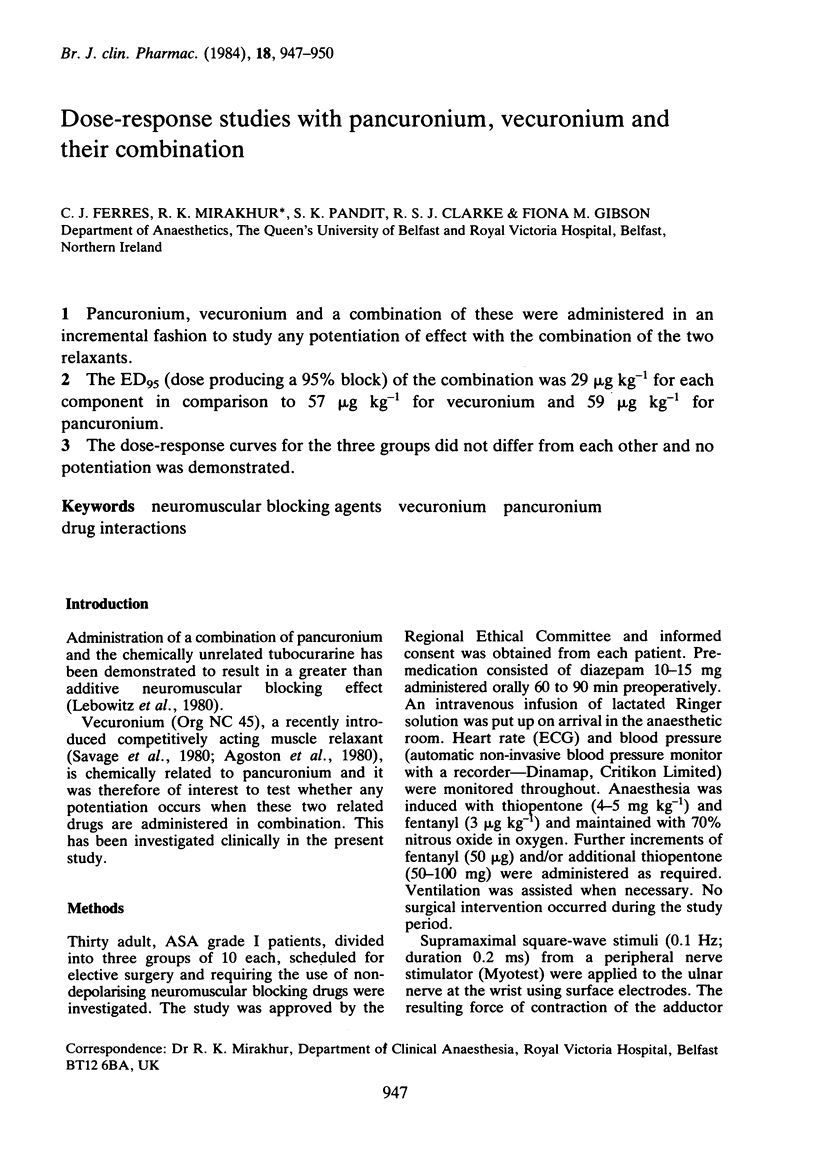Abstract
Pancuronium, vecuronium and a combination of these were administered in an incremental fashion to study any potentiation of effect with the combination of the two relaxants. The ED95 (dose producing a 95% block) of the combination was 29 micrograms kg-1 for each component in comparison to 57 micrograms kg-1 for vecuronium and 59 micrograms kg-1 for pancuronium. The dose-response curves for the three groups did not differ from each other and no potentiation was demonstrated.
Full text
PDF



Selected References
These references are in PubMed. This may not be the complete list of references from this article.
- Agoston S., Salt P., Newton D., Bencini A., Boomsma P., Erdmann W. The neuromuscular blocking action of ORG NC 45, a new pancuronium derivative, in anaesthetized patients. A pilot study. Br J Anaesth. 1980;52 (Suppl 1):53S–59S. doi: 10.1093/bja/52.suppl_1.53s. [DOI] [PubMed] [Google Scholar]
- Ghoneim M. M., Urgena R. B., Dretchen K., Long J. P. The interaction between d-tubocurarine and gallamine during halothane anaesthesia. Can Anaesth Soc J. 1972 Jan;19(1):66–74. doi: 10.1007/BF03006909. [DOI] [PubMed] [Google Scholar]
- Lebowitz P. W., Ramsey F. M., Savarese J. J., Ali H. H., deBros F. M. Combination of pancuronium and metocurine: neuromuscular and hemodynamic advantages over pancuronium alone. Anesth Analg. 1981 Jan;60(1):12–17. [PubMed] [Google Scholar]
- Martyn J. A., Leibel W. S., Matteo R. S. Competitive nonspecific binding does not explain the potentiating effects of muscle relaxant combinations. Anesth Analg. 1983 Feb;62(2):160–163. [PubMed] [Google Scholar]
- Mirakhur R. K., Pandit S. K., Ferres C. J., Gibson F. M. Time course of muscle relaxation with a combination of pancuronium and tubocurarine. Anesth Analg. 1984 Apr;63(4):437–440. [PubMed] [Google Scholar]
- Savage D. S., Sleigh T., Carlyle I. The emergence of ORG NC 45, 1- [2 beta,3 alpha,5 alpha,16 beta,17 beta)-3, 17-bis(acetyloxy)-2-(1-piperidinyl)-androstan-16-yl]-1-methylpiperidinium bromide, from the pancuronium series. Br J Anaesth. 1980;52 (Suppl 1):3S–9S. doi: 10.1093/bja/52.suppl_1.3s. [DOI] [PubMed] [Google Scholar]
- Wong K. C., Jones J. R. Some synergistic effects of d-tubocurarine and gallamine. Anesth Analg. 1971 Mar-Apr;50(2):285–290. [PubMed] [Google Scholar]


